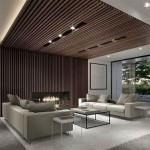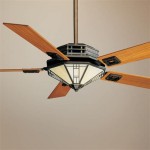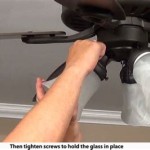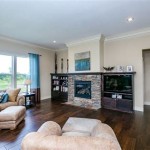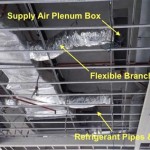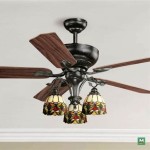Bathroom Ceiling Materials: A Comprehensive Guide to IC3 Rated Options
Selecting the appropriate material for a bathroom ceiling is a crucial decision that impacts the longevity, aesthetics, and overall performance of the space. Bathrooms are inherently humid environments, making moisture resistance paramount. Therefore, understanding the properties and classifications of various ceiling materials, particularly those with an IC3 (Insulated Ceiling 3-hour fire rating) designation, is essential. This guide provides a comprehensive overview of bathroom ceiling materials, with a focus on IC3 rated options and their implications for building safety and compliance.
The primary concern when choosing a bathroom ceiling material is its ability to withstand constant exposure to moisture. Steam from showers and baths can lead to mold growth, warping, and eventual deterioration of materials that are not properly suited for humid conditions. Furthermore, building codes often mandate specific fire-resistance ratings for ceilings, especially in multi-family dwellings or commercial settings. IC3 rated materials address both of these critical concerns, offering both enhanced fire protection and inherent resistance to moisture-related damage.
Understanding IC3 Ratings and Fire Safety
The IC3 rating is a specific fire-resistance designation that applies to recessed lighting fixtures and their compatibility with insulation. While this rating primarily concerns lighting, it often becomes relevant when considering the entire ceiling assembly, including the material used for the ceiling itself. IC3 rated fixtures are designed to prevent the insulation surrounding them from overheating and potentially causing a fire. This is achieved through specific design features that allow for proper heat dissipation even when the fixture is completely surrounded by insulation. While the ceiling material itself might not directly carry an IC3 rating, its interaction with IC3 rated lighting fixtures is a critical consideration.
When selecting a ceiling material in conjunction with IC3 rated lighting, it's crucial to ensure compatibility and adherence to building codes. The building code might require specific types of ceiling materials based on the building's occupancy type, size, and construction. Consulting with a qualified building inspector or architect is highly recommended to ensure compliance and to choose materials that meet the necessary fire-resistance standards. Many ceiling materials, while not explicitly IC3 rated, can be incorporated into a ceiling assembly that, when combined with IC3 rated lighting fixtures, meets the required fire-resistance standards.
Furthermore, understanding the nuances of fire ratings beyond IC3 is important. Terms like "fire-rated," "fire-resistant," and "fireproof" are often used interchangeably, but they possess distinct meanings. Fire-rated refers to materials or assemblies tested and certified to withstand fire for a specific period of time (e.g., one hour, two hours). Fire-resistant implies a material's ability to resist fire damage to some degree. Fireproof, on the other hand, is a rarely used term because almost no material is truly impervious to fire under extreme conditions. The IC3 rating, in the context of recessed lighting, contributes towards the overall fire-resistance of the ceiling assembly.
Common Bathroom Ceiling Materials: Advantages and Disadvantages
Several materials are commonly used for bathroom ceilings, each with its own set of advantages and disadvantages regarding moisture resistance, aesthetics, and cost. Understanding these trade-offs is critical for making an informed decision.
*Moisture-Resistant Drywall (Green Board/Blue Board):
This type of drywall is specifically designed for use in humid environments. It features a water-resistant paper facing and a core that is more resistant to moisture absorption than standard drywall. While it offers improved moisture resistance compared to standard drywall, it is not waterproof and can still be damaged by prolonged exposure to standing water. It requires proper sealing and painting with a moisture-resistant paint to maximize its protection. It is a cost-effective option, and its smooth surface allows for a variety of finishes. From a fire safety perspective, when used with properly installed IC3 rated light fixtures and the appropriate framing, it often meets basic residential fire code requirements. *Cement Board:
Cement board is a highly durable and water-resistant material made from cement, sand, and cellulose fibers. It is often used as a substrate for tile in wet areas, but can also be used as a ceiling material. It is exceptionally resistant to mold and mildew growth. It is heavier and more difficult to work with than drywall, requiring specialized tools and techniques for cutting and installation. Cement board also requires sealing and painting for optimal protection. While not inherently IC3 rated, its fire-resistant properties contribute to the overall fire safety of the ceiling assembly. *PVC Panels/Planks:
PVC (polyvinyl chloride) panels and planks are completely waterproof and highly resistant to mold and mildew. They are available in a variety of styles and finishes, including those that mimic wood or tile. They are lightweight and relatively easy to install, often using a tongue-and-groove system. PVC is a more expensive option than drywall but offers superior moisture resistance. Many PVC products are fire-retardant, meaning they resist ignition and slow the spread of flames, but it's critical to verify the specific fire rating of the chosen product. Its compatibility with IC3 rated lighting will depend on the specific installation and clearances specified by the lighting fixture manufacturer. *Metal Ceilings (Aluminum or Tin):
Metal ceilings are a durable and visually appealing option for bathrooms. Aluminum is naturally resistant to corrosion, while tin ceilings are typically coated with a protective finish. They are available in a variety of patterns and finishes, from traditional to contemporary. Metal ceilings are waterproof and easy to clean. They can be more expensive than other options and may require professional installation. While metal itself is non-combustible, the ceiling assembly (including the framing and any backing materials) must be carefully considered to ensure it meets fire code requirements. Check the specific fire rating of the metal ceiling system and its compatibility with IC3 rated lighting fixtures. *Wood (Treated):
While not as common as other options, wood can be used for bathroom ceilings if properly treated and sealed. Woods like cedar and redwood are naturally resistant to moisture and decay, but even these require a protective coating. Wood ceilings offer a warm and natural aesthetic. They require ongoing maintenance to prevent moisture damage. From a fire safety perspective, untreated wood is highly combustible. Therefore, any wood used in a bathroom ceiling must be treated with a fire-retardant coating and installed in accordance with building codes. IC3 rated lighting fixtures must be carefully selected and installed to ensure adequate clearance from the wood ceiling.Key Considerations for Installation and Maintenance
Proper installation is crucial for ensuring the performance and longevity of any bathroom ceiling material. Regardless of the material chosen, it must be installed in accordance with the manufacturer's instructions and local building codes. This includes proper framing, sealing, and ventilation. Inadequate ventilation can exacerbate moisture problems, even with moisture-resistant materials.
Ventilation is a critical component of any bathroom design. A properly sized and functioning exhaust fan is essential for removing moisture from the air. The exhaust fan should be installed near the shower or bath and vented to the exterior of the building. Building codes often specify the minimum airflow requirements for bathroom exhaust fans. Regularly inspect and maintain the exhaust fan to ensure it is operating effectively.
In addition to proper installation and ventilation, regular maintenance is necessary to prevent moisture damage and prolong the life of the ceiling. This includes regularly cleaning the ceiling to remove dust, mold, and mildew. Use a mild detergent and water to clean the ceiling, and be sure to dry it thoroughly afterward. Inspect the ceiling regularly for any signs of water damage, such as discoloration, warping, or peeling paint. Address any problems promptly to prevent further damage. Recaulk around fixtures and fittings as needed to maintain a watertight seal.
When combining different materials, ensure compatibility. For instance, if using cement board as a substrate for tile, use the appropriate thin-set mortar and grout designed for wet environments. When using wood trim or accents, ensure they are properly sealed and protected from moisture. Similarly, ensure the chosen paint is specifically formulated for bathroom use, offering mildew resistance and a durable, washable finish. Careful consideration of these details will contribute to a long-lasting and aesthetically pleasing bathroom ceiling.

6 Benefits Of Pvc Ceilings In Bathrooms A Comprehensive Guide

Creative Bathroom Ceiling Ideas For Your Home Renovation

The Best Bathroom Ceiling Material Options Igloo Surfaces

What Is The Best Bathroom Ceiling Material Easy

What Is The Best Bathroom Ceiling Material Easy

What Is The Best Bathroom Ceiling Material Easy

What Is The Best Bathroom Ceiling Material Easy

What Is The Best Bathroom Ceiling Material Easy

Types Of Designs Bathroom Ceilings Happho

What Is The Best Bathroom Ceiling Material Easy
Related Posts

